2015 Trek Slash 9.8 Carbon 27.5
(discontinued)
| Where To Buy | |||
|---|---|---|---|
Free standard shipping on all bikes (continental U.S. only).
Flat rate shipping to Hawaii and Alaska. |
Free standard shipping on all bikes (continental U.S. only).
Flat rate shipping to Hawaii and Alaska. $6,499.99
|
||
Slash 9.8 XT Gen 6
$6,499.99
|
|||
Slash 9.8 GX AXS T-Type Gen 6
$7,199.97
|
|||
Slash 9.9 XX AXS T-Type Gen 6
$11,500.00
|
|||
Slash 9.9 X0 AXS T-Type Gen 6
$9,399.99
|
|||
Free shipping on orders over $50 (continental U.S. only).
International shipping available. Some exclusions apply. |
|||
Free shipping on orders over $50 (continental U.S. only).
International shipping available. Some exclusions apply. |
|||
Reviewed by Dylan Stucki and AJ Barlas // Photos by Lear Miller
After much anticipation, the Trek Slash goes carbon for 2015. The 160mm travel bike underwent a major redesign last year, gaining 27.5-inch wheels, noticeably better pedaling performance, and even more capable geometry. This all-mountain/enduro ripper was just waiting to unleash its fury on the trails at the 2015 Vital MTB Test Sessions.

Highlights
- OCLV Mountain Carbon frame with aluminum chainstay
- 27.5-inch wheels
- 160mm (6.3-inches) of rear wheel travel // 130/160mm (5.1/6.3-inches) front travel
- E2 tapered headtube
- 65 or 65.6-degree head angle
- 66.5 or 67.1-degree actual seat tube angle
- 350 or 359mm (13.8 or 14.1-inch) bottom bracket height
- 435 or 433mm (17.1 or 17.05-inch) chainstays
- BB95 bottom bracket
- 142mm rear spacing with 12mm through axle
- Measured complete weight (size 21.5-inch, no pedals): 28-pounds, 9-oz (12.96kg)
- $6,089.99 MSRP
After a few legacy aluminum versions of this frame, a bit of carbon is just what the Slash needed. The OCLV Mountain Carbon tubing has a similar look to Trek's Remedy and Fuel EX lines, really slimming the profile of the bike and making it smooth and stealthy. Trek does their best to protect the frame with integrated rubber guards on the downtube, chainstay, and outside of the seat stays.

Out back, the Slash relies on Trek's proven Full Floater suspension design coupled with a magnesium EVO link and Active Braking Pivot (ABP) centered on the 142x12mm rear axle. The RockShox Monarch Plus RC3 DebonAir shock is possibly one of the most exciting specs on this bike for 2015. Formerly held prisoner to FOX made Dual Rate Control Valve (DRCV) shocks, Trek owners are finally getting what they wished for. While the more common shock is a welcome upgrade, know that it's still a very uncommon 209.5x60.3mm size should you wish to use something different.
The Slash received some updates with the addition of 27.5-inch wheels for 2014 including a slacker head angle and a longer front center. After proving the geometry with the 2014 aluminum version, the carbon version features the exact same numbers. The bike has Trek's Mino Link geometry adjustment system located in the seat stay. In the “high” position the bike has an impressively slack 65.6-degree headtube angle and 14.1-inch bottom bracket height. Flipping the chip to the “low” position brings the head angle down to an even slacker 65-degrees and lowers the bb height to 13.8-inches.

Additional frame features include a tapered headtube, press fit bottom bracket, ISCG tabs, a rear disc brake post mount, optional direct front derailleur mount, 1cm mud clearance with the stock 2.35-inch tires, and room for a water bottle inside the front triangle. Semi-internal routing for the rear derailleur and seatpost add to the clean look, and are made in a way that eliminates cable rattle.
Trek makes the bike in a whopping five sizes (designated 15.5, 17.5, 18.5, 19.5, and 21.5) and four models, two of which are carbon and two are aluminum. In the carbon variety, the 9.9 model has a full carbon frame, while the 9.8 still has an aluminum chainstay. Our Slash 9.8 test bike is the more reasonably priced carbon model at $6,090. Prices for all models range from $3,620 to $8,880.
On The Trail
The trails in San Luis Obispo, California were the perfect application to test the Slash. With a great mix of long drawn out climbs, short punchy climbs, tight ripping turns, some jumps, and full on chunder, the Slash got everything thrown at it.
Before we could hit the trail, the first thing that needed to be switched up was the bar and stem. The 70mm stem and 750mm wide Bontrager Pro Carbon bars with 15mm rise don't quite match the bike’s capability, especially for our 6'2" and 6'5" testers on a size 21.5 frame. As a result, stem lengths of the 50-55mm variety and bars ranging between 780-800mm were added to the mix in order to give the Slash a setup more conducive to what the bike is capable of. The 480mm reach felt generous and just about perfect while standing, and the 645mm effective top tube was comfortable while seated. Not too long, but also not too short, giving the Slash the best of both worlds.

While the geometry is versatile, it's no doubt geared towards annihilating descents. The two geometry settings - high/slack and low/slacker - allow for terrain dependent tuning. It requires about five minutes of your time to rotate the Mino Link flip chips to the high bottom bracket mode. This feature would come in handy if the terrain you're riding requires more pedal clearance, is flatter, or has a lot of steep climbing. Regardless of which setting you choose, with a head angle in the 65-degree range the Slash is ready to tackle roughest trails out there, and we appreciate the fact that you have a truly slack mode if it's needed. The carbon frame yields a stiffer, yet quieter and lighter ride, giving the bike a more playful feel than its aluminum predecessor that optimizes the fun factor while damping the feel of chattery trail noise.
Because sag percentages are clearly marked, the RockShox Monarch Plus RC3 Debonair shock made for easy work while setting up the rear end. With the compression setting fully open, the Slash shows it true colors, and the Debonair really allowed the bike to take off through the gnar. At 30-38% sag the shock held itself up in the travel with a buttery smooth feel off the top and seemingly bottomless travel when combined with the bike's progressive suspension design. The shock didn’t pack out and it was quick to react in fast, choppy terrain. Small bump performance was admirable with the Debonair can and the bike seemed to float over the tops of most rocky sections. When things got truly rough, the Slash monster-trucked through feeling very planted and holding its line well, and at no point did we ever feel in over our heads which says volumes about the way it handles. It's still agile enough to fine tune line choice and playful enough to turn up the fun meter. The front wheel just begged to be lifted, and riding manuals through rocky areas was just as fun and smooth as with two wheels.
With the concentric Active Braking Pivot and brake mount on the seat stay, braking may be a bit different than what you are used to. We noticed the lack of brake squat, with the bike remaining up in its rear suspension under heavy braking as opposed to dipping back in its travel a little. While the rear end was able to remain more active over bumps, this would occasionally translate to a slightly imbalanced feeling with a weight bias toward the front end. We initially experienced some traction loss at the rear tire when leading into tight corners following high speed straights, before adjusting our riding style to be a bit more rearward while braking hard.

While the geometry may be very aggressive in many respects, don’t be fooled by the slack head angle. The Slash features a reasonable effective seat tube angle, and depending on the desired front end setup, it actually pedaled very well when it came time to climb back up. Switching to the high geometry mode improves overall handling with less front end pushing and a better feel on all but the steepest downs. The geometry was thoughtfully put together, providing a balanced work-to-play relationship. The Debonair and carbon frame really give the Slash a well-rounded feel without compromising the bike's ability to smash rock gardens.
Based on past experience with an older (pre-2014) version of the same bike, the updated Slash has much improved pedaling performance thanks to additional anti-squat built into the design. Flipping the shock into a firmer compression setting on the uphill felt more at home than legacy version which performed very sluggish on climbs. That said, we feel like the shock’s platform settings still could yield more of a noticeable difference - likely a result of the increased negative air spring volume that makes it so supple off the top. There’s a decent amount of suspension movement while getting up to speed.

Since its carbon fiber diet, the bike has made another big gain in its perceived weight while coasting down the trail. Compared to many 160mm travel bikes it felt agile and light while throwing it around in corners and the air. The actual weight of 28.6-pounds is about average for a size 21.5 (XL) bike with a carbon frame. In comparison, the previous 2014 aluminum Slash 9 we tested weighed 28.75-pounds. A chunk of the weight on the new bike can be attributed to the new Bontrager Maverick Pro wheels, which have a much wider internal rim width and as a result are a bit heavier. The added rotational weight reduced acceleration speed from a slow start.
Build Kit
With the exception of a few minor changes, the build kit on the Slash 9.8 Carbon packs a lot of great performing parts at a good value. The build includes a mix of RockShox, Shimano, and in-house Bontrager components.
As mentioned previously, a bike of this nature would be better suited with a shorter stem around 50mm and handlebars in the 780 to 800mm range.
The front end is equipped with a Dual Position 130/160mm travel RockShox Pike RC fork, which unfortunately just does not have quite the same feel as the standard Pike RCT3 deep in heavy hits. After playing with the travel adjust on a variety of climbing terrain, we did find that the resulting geometry change was nice for some of the steeper bits, but certainly not worth the performance loss on the downs in our eyes.

Bontrager's Maverick Pro Wheels come with Tubeless Ready rim strips installed, saving you some time and hassle. They're 28mm wide internally, which provides great sidewall support for the otherwise somewhat flimsy 2.35-inch Bontrager XR4 Expert tires. Combined with the wide rims the XR4 Expert tires performed well with good grip in most terrain, but we wanted more aggressive cornering knobs up front than what this tire provides. We also flatted more times on the XR4, both front and rear, than any of the other 18 bikes in our test fleet - further evidence that the treads aren’t up to snuff with what the bike is capable of. The rims took a beating as well, falling out of true with a handful of flat spots after just a few rides. The wheels do not have Bontrager's Rapid Drive hubs, and as a result engagement is average.
As with most Trek bikes, the lever on the 142x12mm axle protrudes quite far from the frame due to the ABP design, and is prone to rock strikes when squeezing through tight sections in the trail.
One detail that caused a minor headache while setting up the controls was that the left hand RockShox Reverb lever, when mounted above the bars, does not play well with Shimano XT brake levers. Ideally this bike would be equipped with a right hand Reverb lever installed under the left side.
Shimano's XT hydraulic disc brakes performed admirably with a 203mm rotor up front and 180mm out back. They provided lots of usable power and great control, and we experienced no fade, pumping, or other odd issues.
SRAM's X1 drivetrain provides great 1X performance at a reduced cost with a great gear range, good durability, and a quiet, friction-free ride. There's no rubber guard on the inside of the seat stay, so consider adding a little mastic tape or something similar to really silence the ride.
Long Term Durability
Over the long term, the Slash seems it would be solid, and even though this is the first carbon version of this specific model, the frame didn’t show any sign of weakness during the test. After a number of punctures, however, the Bontrager XR4 tires seemed like they may be the first item to go, and we'd suggest opting for something with better flat protection. Trek backs the frame with three year warranty.

What's The Bottom Line?
The 2015 Trek Slash 9.8 Carbon is one of the most well-rounded bikes in its travel range, though it clearly excels in the roughest terrain you can find. For the price, the carbon frame, and mid-to-high end spec make it a great value. The Slash feels at home on a wide variety of trails, whether it's monster trucking steep, rocky descents with confidence, or dicing through faster trails with a nimble, fun, and playful feel.
Visit www.trekbikes.com for more details.
Bonus Gallery: 21 photos of the 2015 Trek Slash 9.8 27.5 up close and in action
About The Reviewers
Dylan Stucki - When he's not busy popping no-handed wheelies or shot-gunning beers you're likely to find Dylan comfortably inside the top ten at Big Mountain Enduro races. Since he's a big guy and charges hard he breaks a lot of stuff. He's naturally a perceptive and particular rider who picks up on even the smallest details.
AJ Barlas - In 15 years on the bike AJ has developed a smooth and fluid style. Hailing from Squamish, BC, his preferred terrain is chunky, twisty trail with natural features. He's picky with equipment and has built a strong understanding of what works well and why by riding a large number of different parts and bikes.

About Test Sessions
Three years ago Vital MTB set out to bring you the most honest, unbiased reviews you'll find anywhere. That tradition continues today as we ride 2015's most exciting trail, all-mountain, and enduro bikes in San Luis Obispo, California. Reviews can be accessed 24/7 in our Product Guide. Test Sessions was made possible with the help of Foothill Cyclery. Tester gear provided by Five Ten, Race Face, Easton, Troy Lee Designs, Club Ride, Kali, Royal, Smith, Pearl Izumi, and Source.
1 member reviews
A bunch of technology specific for Trek.
Colors and paint is AWESOME.
It's a good "all around" trailbike.
Little bit more frame flex than other bikes in it's class.
Trek's specific BB is bad news for durability.
Weird shock length limits aftermarket shocks options.
Trek makes great, high quality products and this bike is no exception. It pedals well and descends well too. If you LOVE Trek bikes than you will really enjoy this bike. The paint is done well and it seams like Trek produced this bike very well. With that being said, lets jump into that I didn't like so much..

Trek has made this bike so light that I feel there is a little more flex than what should be. An XL frame sat at 28 lbs. I would rather have it weight 28.5 lbs and have a stiffer ride. The bottom bracket is a pressfit but the same kind that Trek puts on it's carbon road bikes. That being said, regular pressfit BBs have proven to cause issues with significant abuse and stress. The BB on this bike is, for lack of a better expression, a pussy version of a regular pressfit BB that typically can't handle the abuse and stress that the regular pressfit can take. If you are a heaver rider or just ride tough, I wouldn't recommend this bike just because of this reason. Moreover, Trek is still making their enduro bikes with the older (short and tall) geometry. This makes the seattube length (20.5") too tall for my 6'3" build. What happens is I get bucked and kicked off my bike when trying to ride steep and difficult terrain. This doesn't really increase riders confidence for taller riders. Last of all, the rear shock eye to eye is 8.25" by 2.375". After you do some research, you will notice that this is not a standard length and if you want to get an aftermarket shock, like the new fox float x shock, you will need to either throw it on and alter the geometry of the bike or obtain retrofitted hardware, both of which are a pain.
Bottomline: Trek makes excellent bikes. The Slash however, seams to already be outdated. Fix the geometry to long and short, stiffen it up a little bit more, and freaking throw away their pressfit BB idea and put a standard threaded bottom bracket and this is a bike that I would most likely buy again. As for now, if you're looking for the best enduro bike, keep looking.
0 comments
Post a reply to: Super fun bike but should be better than what it is.
Specifications
| Where To Buy | |||
|---|---|---|---|
Free standard shipping on all bikes (continental U.S. only).
Flat rate shipping to Hawaii and Alaska. |
Free standard shipping on all bikes (continental U.S. only).
Flat rate shipping to Hawaii and Alaska. $6,499.99
|
||
Slash 9.8 XT Gen 6
$6,499.99
|
|||
Slash 9.8 GX AXS T-Type Gen 6
$7,199.97
|
|||
Slash 9.9 XX AXS T-Type Gen 6
$11,500.00
|
|||
Slash 9.9 X0 AXS T-Type Gen 6
$9,399.99
|
|||
Free shipping on orders over $50 (continental U.S. only).
International shipping available. Some exclusions apply. |
|||
Free shipping on orders over $50 (continental U.S. only).
International shipping available. Some exclusions apply. |
|||





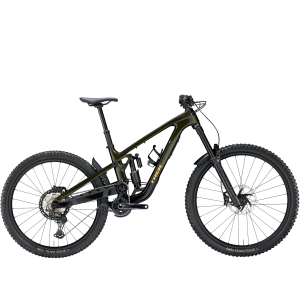
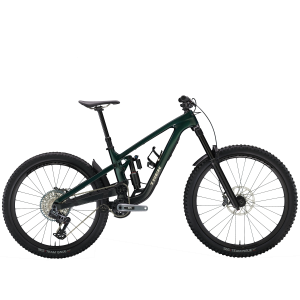

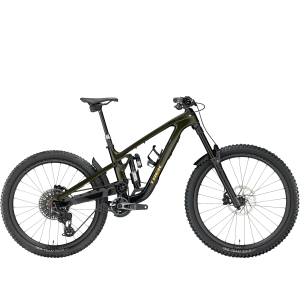


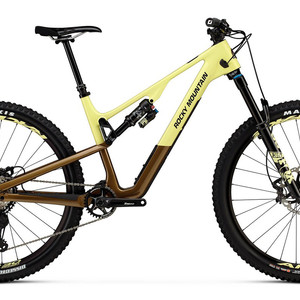

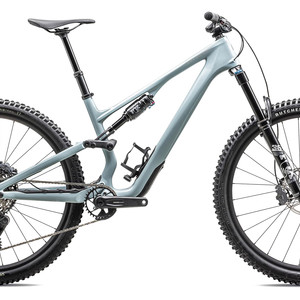
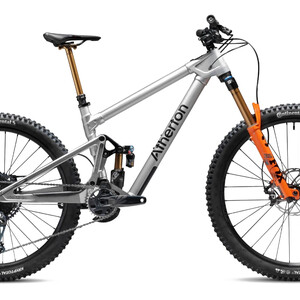
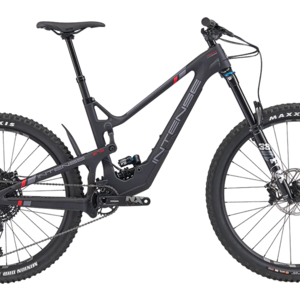

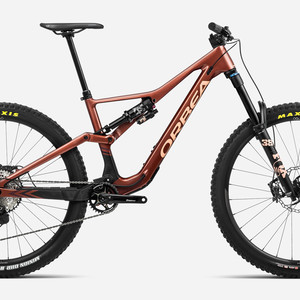
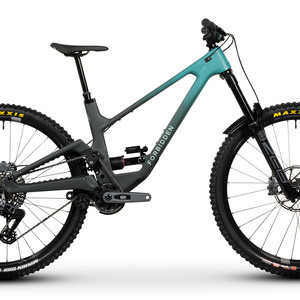






23 comments
Post a reply to: 2015 Test Sessions: Trek Slash 9.8 Carbon 27.5